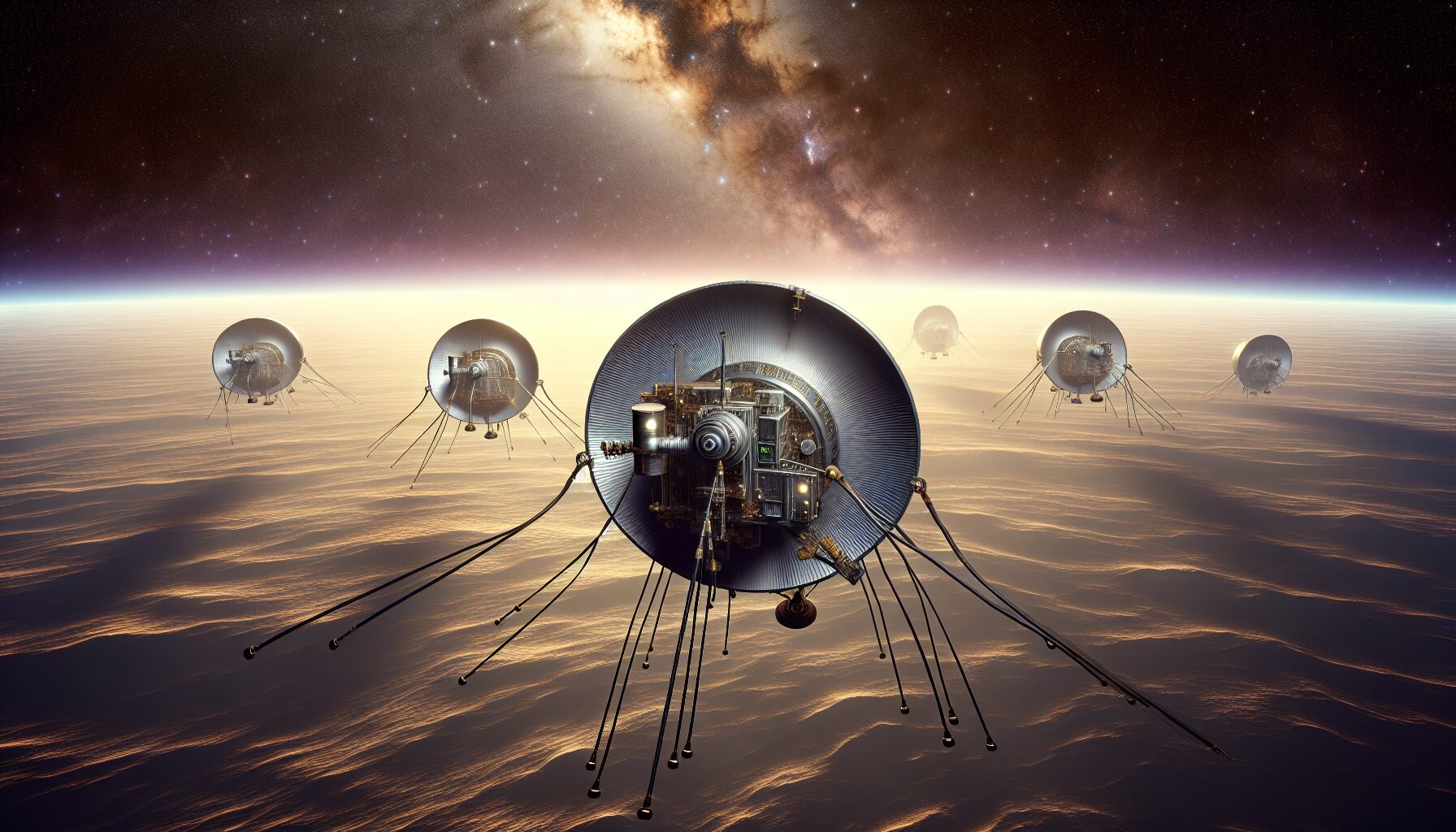Launched in 1977, the Voyager probes were humanity’s ambitious first steps towards interstellar space. These spacecraft, Voyager 1 and Voyager 2, set out to explore the furthest reaches of our solar system and beyond. Now, more than four decades later, they continue their voyage into the unknown, carrying with them the essence of human curiosity and spirit.
Voyagers’ Mission and Achievements
The primary mission of these robotic emissaries was the exploration of Jupiter and Saturn, and they far exceeded their original mandate. According to Nasa’s Voyager Mission Overview,
“The spacecraft have traveled farther and lasted longer than any other in history.”
They provided the first detailed images and data of these gas giants and their moons, revealing volcanic activity on Io, Jupiter’s moon, and intricate rings around Saturn.
Interstellar Journey
After completing their primary objectives, the Voyagers continued to push the boundaries of human exploration. Voyager 1 entered interstellar space in August 2012, and Voyager 2 followed suit in November 2018. This distinction makes them the first human-made objects to venture into this uncharted territory, a feat that has transcended their initial mission plan.
The Loneliness Out There
As they continue their plunge into the vast emptiness of space, these probes have become symbols of solitude. Traveling at speeds of over 38,000 miles per hour, they are moving farther away from Earth every second. Despite the monumental achievement, it is undeniable that the Voyagers are now distant memories operating in cold and dark silence.
NASA does its best to keep in touch with the probes. According to NASA’s Voyage Communications,
“The signals from the spacecraft take more than 18 hours to reach Earth, and that time is only increasing.”
Their instruments, albeit aging, continue to send back invaluable data about the conditions in the space they traverse. However, with each passing day, the power needed to keep them operational dwindles, bringing the inevitable conclusion closer.
The Legacy of Voyager
- Voyager’s Golden Record: Each probe carries a copy of the Golden Record, a 12-inch gold-plated copper disc that contains sounds and images of Earth’s diverse life and culture. Should the probes be encountered by other life forms, they carry messages intended to depict the diversity of life on Earth.
- Historical Achievements: They have made breakthroughs such as the first up-close images of planets and significant advancements in our understanding of the heliopause.
- Symbol of Exploration: The Voyagers urge humanity to ponder the endless possibilities that lie beyond, reflecting mankind’s unyielding quest for knowledge.
Even as the power of these incredible machines wanes, their legacy is undying. The Voyager probes will continue to float silently in the unending vastness of space long after they cease to communicate with us, a testament to human ingenuity and the desire to explore.

Comments